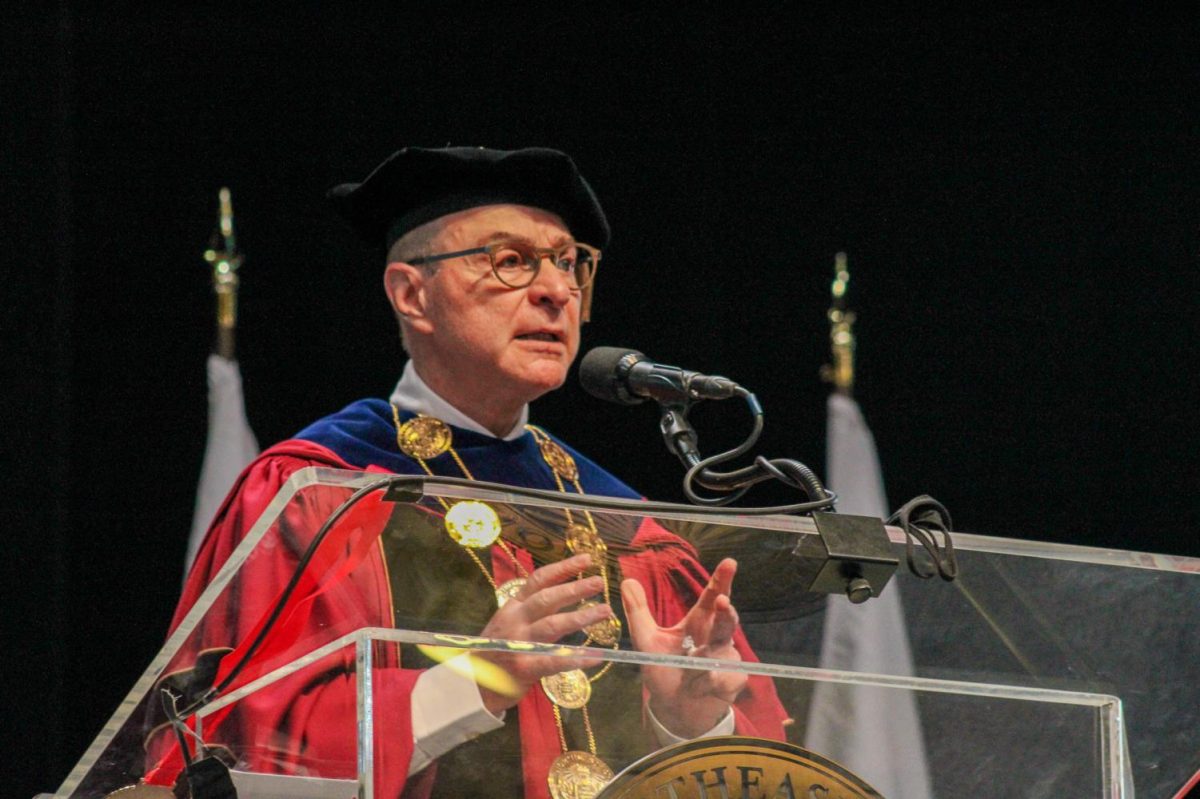A jellyfish-shaped pendant gleamed from within its case. A likeness of Mickey Mouse danced on a yellow jar made of ash splints and paper. Printed on silk, John Travolta’s face glared from a small wooden easel.
These works were among a large collection of jewelry and textiles displayed at two separate exhibitions that opened yesterday at the Museum of Fine Arts (MFA).
“Jewelry by Artists: The Daphne Farago Collection” features work by leading 20th-century American and European artists. The collection was donated by art collectors Daphne and Peter Farago in January 2006.
With more than 200 pieces, the exhibition showed material and sculptural forms of jewelry that were made in independent studios and date back to the 1940s.
“[The jewelry] is not a commercial design. It’s not Tiffany’s, it’s not bling,” said Kelly L’Ecuyer, an MFA assistant curator.
A silver necklace by Alexander Calder was inspired by African and ancient Greek and Roman jewelry. With its oval form and hourglass-shaped metal plates, it exemplifies the artist’s belief that jewelry has movement, L’Ecuyer said.
A ring by Margaret DePatta embodies the principles of constructivism including geometry, space and transparency.
Because of his passion for collecting stones, artist Sam Kramer frequently walked around with a pocket full of stones, many of which are included in his jewelry, L’Ecuyer said.
The largest collection of jewelry in the museum belongs to Robert Ebendorf, who was influenced by pop art. He did not fear using a wide range of materials, L’Ecuyer said. His work includes an assembly of styrofoam balls, Chinese newspapers and gold, all in one necklace.
With its intricate and angular designs, most of the jewelry on display appears difficult to wear. For example, “Oh! I am precious!” made by Gene Pijanowski, is a large necklace made of gold paper. When worn, the necklace would extend from one shoulder to the other.
“It’s actually very comfortable. It’s like the necklace floats above the body,” L’Ecuyer said.
Some artists used their jewelry as a form of social commentary.
Alma Eikerman’s jewelry carried a feminist undertone. In her 14 karat gold bracelet, “Sculptural Hollow Form,” from 1972, Eikerman rejects a delicate, feminine structure and chooses a daring and bold arrangement instead.
Bruce Metcalm used his jewelry, mostly made out of wood, to comment on the imperfections of human life, L’Ecuyer said.
The second exhibition on display at the MFA is called “Ed Rossbach Fiber Arts from the Daphne Farago Collection.”
This collection explores many influences on Rossbach’s art during his career, including his study of historic textiles and baskets, said Lauren Whitley, an MFA assistant curator.
Rossbach wanted to do fun things with complex weaves, Whitley said. This is particularly evident in his netting piece “Early Cross” from 1967, which contains a variety of bright colors like lime green and orange.
Rossbach also enjoyed the contrast between complex techniques, like coiling and twining, and images from pop culture like Mickey Mouse, Whitley said. The Disney character often appears in Rossbach’s art. Mickey served a more ironic significance in Rossbach’s weaving classes at University of California at Berkeley. The classes were often referred to as “Mickey Mouse” classes, as if they were foolish, Whitley said.
The MFA is currently being renovated and when the renovations are finished, the West Wing gallery will be named The Daphne and Peter Farago Gallery of Studio Craft in their honor, said Malcolm Rogers, director of the MFA.
The two exhibitions will be on display through March 5, 2008.








